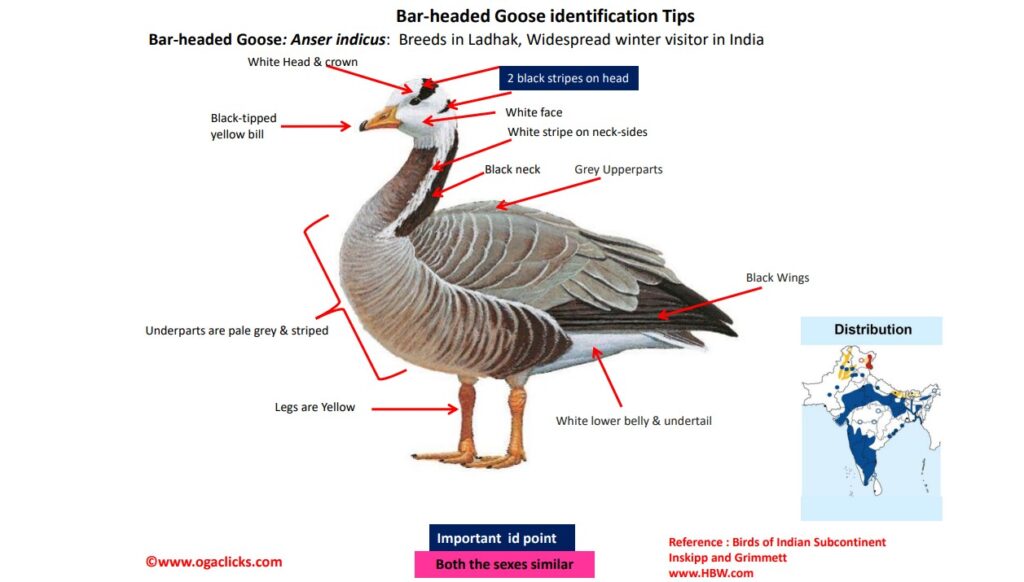Bar-headed Goose

Bar-headed Goose Anser indicus
Etymology :
- Anser : Latin word for Goose
- Indicus: From India
Vernacular Name : Hindi: Hans, Kareyee hans, Birwa, Sirpatti Sawan, Sans: Kadamb hans, Pun: Sawa magh, Bi: Karhanch, Mogli, Ass: Bornooria hanh, Boga rajhanh, Mani: Kaang nga, B’desh: Badi hans, Nepal: Girwa, Paria, Ladakh: Nangpa, Guj: Rajhans, Mar: Pattkadamb, rajhans Ori: Hansa, Ta: Vari kazhutha thara, Neer vathu, Te: Tella pedda batu, Mal: Kurith-thalayan
Distribution in India: Breeds in Ladhak, widespread winter visitor.
Arguably the highest flying birds, crosses Himalayas to come to India. Have been recorded at heights of Mt Everest.
Description: Size of 71-76 cm. It is very pale grey with white face, dark hind neck and lower flanks, white stripe on neck-sides and two dark bars on hind crown; in flight shows long wings with pale forewing and blackish remiges; small, black-tipped yellow bill, yellowish legs. Sexes alike, although male is slightly larger than female.
Habitat: It is found in variety of wetlands in highland plateau, generally at 4000–5300 m, preferably near rocky outcrops. Winters in lowland swamps, lakes and rivers.
Food Habits: It is mainly vegetarian and eats grasses, roots, stems and green parts of plants and sedges; in winter also grain, tubers and other vegetables, and seaweed on coast and has high tolerance for otherwise poisonous plants. In breeding season takes also eats, small insects and small crustacean. Forages mainly on land, by grazing; also on water.
Breeding Habits: They breed in May-June in Ladhak Builds shallow nest of vegetation, lined with down, among marshes, on ground or in trees. Returns to same nesting site year after year. They lay a clutch of 4–6 eggs. The incubation period is 27–30 days by female alone commencing with fourth or fifth egg. Chicks leave nest-site on second day after hatching, being self-feeding by day 3–4.The fledging period is 65–80 days.
.